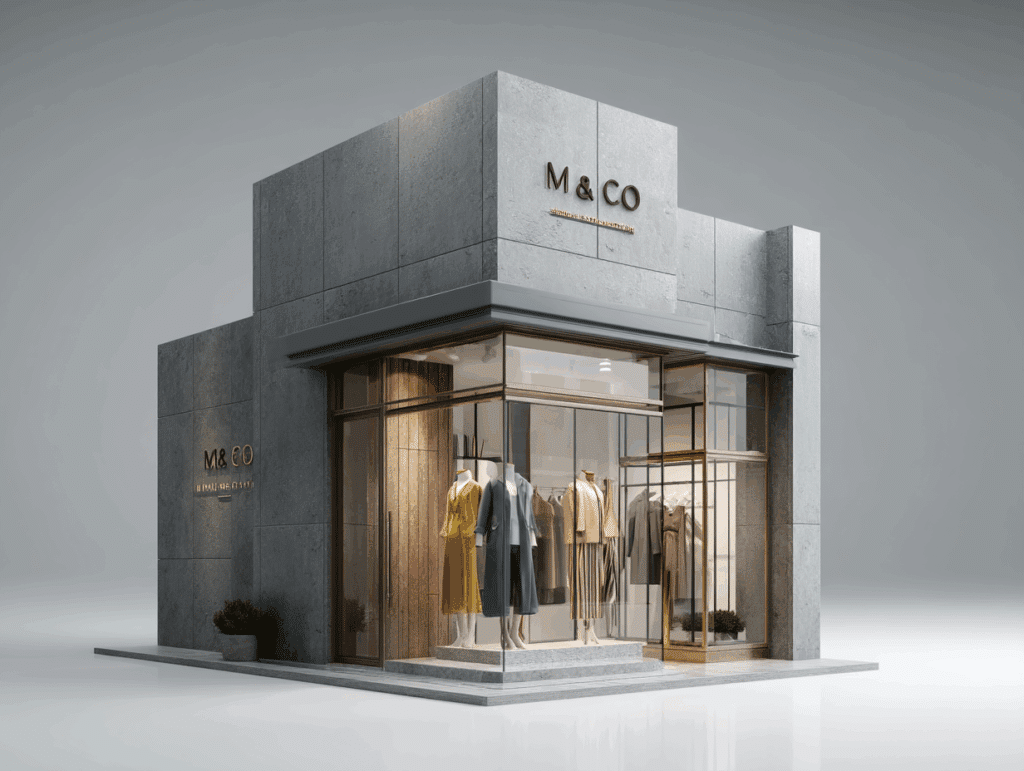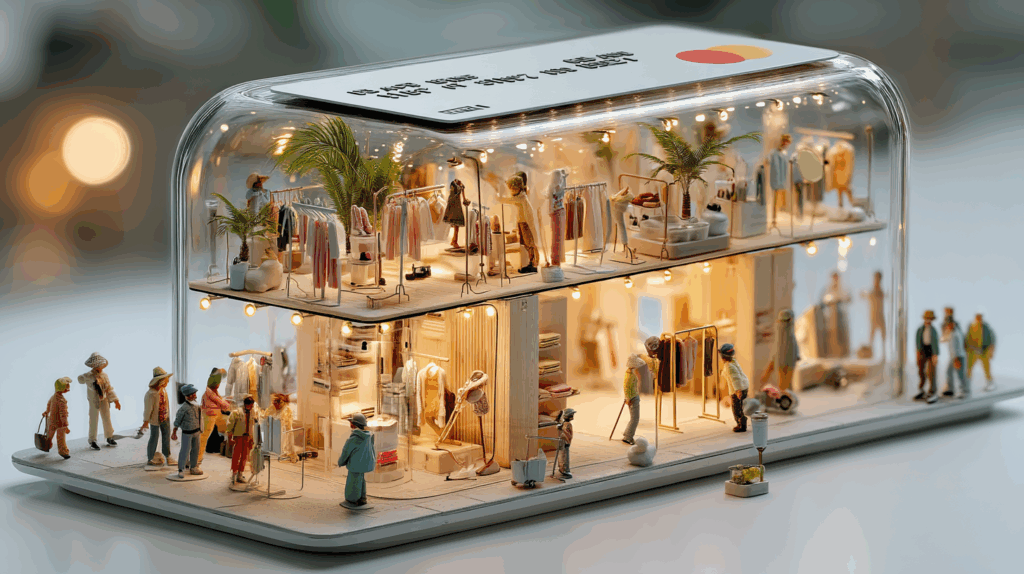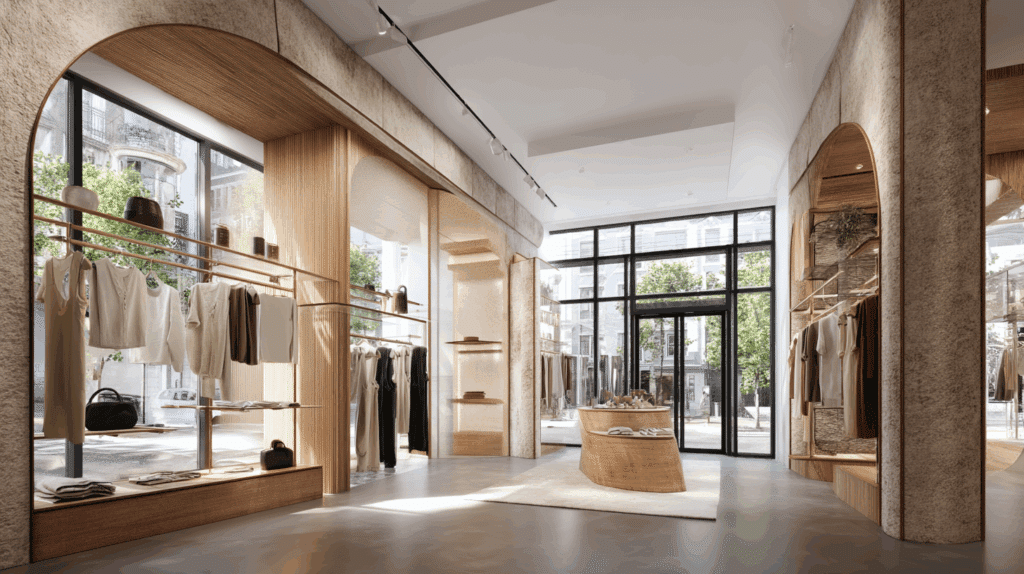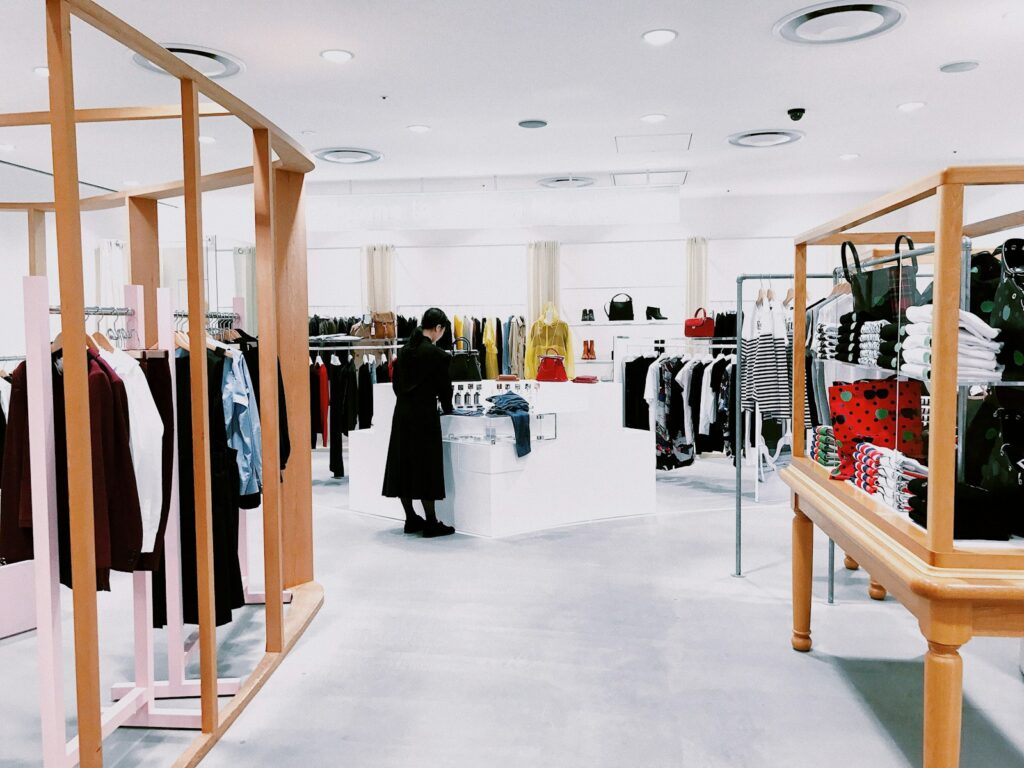Have you been wondering how to open a clothing shop but don't know if it is still worth it? Let me tell you something: if you really want to make a difference and make your clothing shop a strategic place, where people do not just buy, but experiencethen you are in the right place.
This comprehensive guide will accompany you step by step, showing you how to open a clothing shop in Italy and turn it into an exciting and profitable adventure. Be prepared, because this is no longer the era of 'makeshift shops' that survived with little effort. Today you need vision, strategy and the will to get serious. If you are ready to dive into this challenge with an open mind and an enthusiastic heart, then let's start now.
We will give an overview of:
-
- how to strategically structure the selection and purchase of products
-
- how to calculate the right margins and sales prices
-
- what are the core marketing and sales skills you need to master to have a successful shop in 2025
Finally, I will give you six practical tips to get your entrepreneurial adventure off to the best possible start in a time of recession where most traditional shops are struggling to survive or are closing their doors for good!
it is necessary to offer customers an engaging story and make them feel like protagonists. An experience, a human touch that makes their shopping experience something (almost) magical that they won't find anywhere else but in your shop
I am Corrado Manenti and today, with years of experience behind me, I am dedicated to helping those who dream of launching their own fashion line, offering advice, training and support at every level. During my career, I have collaborated with emerging designers, textile companies and independent shopslearning what really works and what does not when it comes to conquering a competitive market.
Are you ready to embark on this adventure? Let's get started!
From idea to reality: planning your trip
Opening a clothing shop is not simply a matter of renting a space and filling it with clothes: it is a journey that starts even earlier, within you. You must possess the right entrepreneurial mentalitythe conviction of wanting to create something unique, the perseverance to keep going even in the face of difficulties and the willingness to learn a range of skills from accounting to marketing, from supplier management to customer dialogue.
To make it more engaging, stop for a moment and ask yourself:
-
What really motivates me to open a clothing shop?
-
Am I ready to handle all aspects of this business, from administration to public relations?
In the context of 2025, marked by the advance of e-commerce, the physical shop can still be an extraordinary opportunity. However, you can't think of 'cashing in' without lifting a finger: you will have to fill many roles, going from accounting to social media manager in a matter of hours.

It is a real "entrepreneurship intensive course"which does not forgive superficiality but can give great satisfaction. If you are passionate about fashion and want to make customers feel at home, a clothing shop can be your ticket to a new working lifestyle.
How to structure the idea from a business plan
Before opening your shop, it is essential to have a business plan well-defined, your guide through every future challenge. In this document you will have to put your brand identity down on paper: are you a designer with your own line (private label), or do you prefer to start with the resale of better known brands (multi-brand)?
And your target audience who is it: very young people looking for streetwear trends, curvy women looking for perfect fits, or a business male audience with sleek lines? The more specific you are in identifying your audience, the easier it will be to structure your offer.

Within the business planyou have to calculate the initial costs precisely. For a small clothing shop, the minimum figure could start at EUR 50,000 (including rent, renovation, set-up, initial stock and bureaucracy), but it can grow a lot depending on the location. Here are a couple of key points to keep in mind:
-
Strategic locationYou don't have to be in the city centre, but the area must have decent foot traffic and, if possible, an identity in line with your style.
-
Reserve FundAlways add space in the budget for the first few months, when the shop is not yet known and sales may be lower than expected.
Another important piece is themarket analysis. Understand who the competitors are in your area, what price ranges they offer and what kind of image they have. Underestimating this often leads to clashes with already well-established shops, risking an unsuccessful overlap.
A complete planhowever challenging, will give you a valuable navigator in the first few months and will help you avoid common mistakes.
How do I choose between single-brand, multi-brand and private label?
Define the shop model is a key step. With a multi-brand approach, you collaborate with various brands and can offer a wide range of styles, intercepting different tastes. If, on the other hand, you focus on a single recognised brand (mono-brand), you will have to bring out your uniqueness through fit-out and services, while if the brand is your own (private label), the responsibility is even greater, because you will have to design the garments, choose the materials and dialogue with the textile laboratories for production.
In this scenario, the most challenging - but also the most delicate - part remains the for sale. Designing garments or selecting brands is all in all 'easy' compared to the work of making them known and appreciated by customers.
You will then have to elaborate a marketing strategy that enhances your products, set prices carefully and perhaps offer special services that add to the shopping experience. And if your shop becomes a benchmark for style, you might also start thinking about the evolution into chain or franchise shopsas long as it all rests on a strong and replicable concept. But how to do it? z
Building a shopping experience: from location to sales strategy
In 2025, to stand out in the retail world, it is not enough to offer quality garments: you have to give customers a real shopping experience.
The idea of 'concept-store"is becoming more and more popular because it allows you to combine the aesthetic universe of your brand with an engaging narrative that goes beyond the act of simply buying. Well-designed atmospheres, Instagrammable corners and personalised service are key elements in encouraging people to enter, stay and return.

Also the sales strategy should be thought of from an omnichannel perspectiveIntegrating the physical shop with e-commerce or social platforms allows you to expand your customer base and stay in constant contact with your customers.
Try a mini-exercise nowHow would you like a customer to feel, crossing the threshold of your shop? What emotions or feelings would you like to arouse? Write down on a sheet of paper 3 adjectives and 3 colours that describe your idea. This will help you clarify how to set up the concept.
From visual merchandising to marketing, how to open a clothing shop
If your shop is like a theatre, visual merchandising provides the perfect backdrop. Displaying windows and shelves according to seasonality or specific themes can determine whether or not a passer-by will enter your shop.
Frequently renewing the interior design, highlighting the most profitable products, creating themed areas and using well-designed lighting makes the customer experience more pleasant and encourages purchases.
Equally decisive is the marketingwhich today embraces both the digital and physical worlds. Use social media to tell the behind-the-scenes story of your shop, showcase new arrivals or give style tips, and combine these activities with local initiatives such as collaborations with artists, designers or photographers, thus increasing the visibility of your shop in the community.

A simple but powerful idea is to invite a small group of loyal customers to a exclusive event preview of new collections: exclusivity reinforces a sense of belonging and makes people feel special and involved in your project. Finally, effective management of the warehouse and sales flow is essential to enhance all the efforts made so far.
If you can correctly predict the trends and order the right products in the ideal quantities, you will avoid having to resort to excessive discounting or, even worse, risk running out of goods. Regularly analysing sell-through and constantly monitoring sales will help you quickly understand customer preferences, allowing you to promptly adapt your offer.
But how do I create a community?
Standing out in a competitive world requires a storytelling compelling and a targeted strategy. If you prefer to focus on a niche - such as women's sportswear, selected vintage style or custom-made streetwear - you can speak to a passionate audience, happy to find a place that reflects their tastes.
Organising regular events, workshops with up-and-coming designers, micro-fashion shows or customised style consultations can turn your shop into a true creative hub.
Creating and nurturing a community of customers who identify with your brand values is a huge advantage. A loyalty programmespecial discounts for birthdays, or small attentions such as a 'welcome back' message at the beginning of the season, consolidate that sense of belonging. In an age when experience is more important than pure possession, knowing how to give special moments to those who enter the shop is a trump card.
Want some quick advice? Always put a small notepad near the till: mark the customer feedback, frequently asked questions and suggestions you receive. This real and 'hot' information will help you to improve your offer and strengthen the bond with your customers.
Consolidate and innovate: facing times of crisis and taking advantage of them
Needless to say, the recent economic landscape has seen many traditional shops close, but the crisis can turn into a moment of opportunity for those who know how to respond differently. When the audience is more selective, you can attract people who are not satisfied with the 'usual shop'. If your store is a meeting place, complete with mini-events, presentations and a genuine advisory service, it becomes more attractive than a generic online shop.
This approach represents a valuable opportunity to conquer the early birds, those pioneering customers who like to be the first to discover new trends, share them with their circle and feel part of an exclusive community, thus turning your shop into a recognised and loved landmark in your city.
In a market where experience is worth more than mere convenience, people are willing to spend for quality garments combined with memorable service. If you create a calendar of events - intimate fashion shows, presentations with industry influencers, meetings with young designers or even simple launch aperitifs - you turn your shop into a lively space that does not suffer the crisis but faces it head-on, offering something different.
Growing with your shop: from single store to successful chain or customised boutique
Once you open your shop and enthusiastically celebrate your first sale, you will quickly begin to realise that the opening was only the first page of a much more complex and exciting story. In fact, after the initial enthusiasm and excitement of the first few days with curious customers, you will soon realise that the real challenge is to keep your shop alive and thriving in the long run.
Imagine, for a moment, a small shop that over the years has seen entire generations pass by its window: first young couples looking for fashionable clothes to go out on a Saturday night, then professionals looking for a flawless outfit for work, and finally teenagers enthusiastic about the latest trends seen on social media.

Yet despite a glorious past, many such shops have had to lower their shutters, victims of economic crises and the overwhelming wave of e-commerce.
But there are those who have managed to rewrite their own destiny, proving that the secret lies not in resisting change, but in embracing it with courage and strategic vision. Those who know how to reinvent themselves, adapt quickly to new consumer habits and intelligently exploit the opportunities offered by technological innovations, not only survive, but grows and prospers.
You might decide, for example, to turn your shop into a chain of shopsreplicating the winning model you have carefully honed. Or you could focus on offering highly customised services, turning every visit to your shop into a unique and unforgettable experience for your customers.
Imagine a customer who enters for the first time, is greeted with a warm smile and immediately feels at home, finding not only a perfect outfit but also a place where she feels understood and valued.
To bid or not to bid? The entrepreneur's dilemma
Le promotional offers represent one of the more powerful tools at the disposal of those running a physical shopespecially in an environment increasingly dominated by e-commerce. I decided to delve into this topic because creating strategic and effective offers can make a huge difference not only in the number of people who come into your shop, but also in the quality of the relationship you are able to build with them.
Le well-designed promotions do not simply attract customers, but strengthen the brand imageThey build loyalty and turn a simple visit into a memorable experience.
To create winning bids, remember to
-
Planning offers based on sales data and segment the audience to maximise results.
- Using targeted promotion strategiesprogressive discounts, creative bundles and flash promotions announced on social media.
Enrich the shopping experience by offering exclusive in-store promotionssuch as discounts reserved for those trying on clothes, last-minute special offers and small giveaways, strategically integrating the online and offline dimensions through services such as click-and-collect and digital coupons redeemable exclusively at the point of sale.

These strategies make the physical shop competitive with e-commerce, encouraging repeat visits and increasing the average receipt value.
Six tips to get your shop off to a good start:
- Get the numbers right: Before opening the shop, accurately estimate start-up and operating costs, including rent, personnel, inventory, and marketing. Use financial management software to monitor income and expenditure, and plan a budget to avoid surprises!
- Run the warehouseManage your inventory effectively to avoid unnecessary accumulation of unsold products. Organise your warehouse in a way that facilitates stock control and use sales strategies such as seasonal promotions to continuously renew your offer.
- Shop variable quantities of productsCollaborate with suppliers to obtain flexible supplies. Start with small quantities to test demand and, once you have identified popular products, negotiate larger quantities to obtain better prices.
- Put your label onDifferentiate your shop by creating your own branded product line. This not only increases the perceived value of your items, but also encourages the loyalty of customers looking for exclusivity.
- Invest in customer relationsBuild lasting relationships with your customers through excellent, personalised service. Use a CRM system to collect customer information and send targeted communications such as promotional emails and birthday greetings.
- The shop must become a meeting pointTurn your shop into a welcoming and social place where customers want to come back. Organise events, new collection launches or workshops to engage the community and create a lively, interactive environment.
How to open a clothing shop: FAQ
What are the first steps in opening a clothing shop?
The first steps include drawing up a business plan, choosing a target customer base, finding reliable suppliers and selecting a strategic location. It is also crucial to define the initial budget and decide whether to open as a sole proprietorship or a company.
How much does it cost to open a clothing shop?
The cost can vary greatly depending on the size, location and type of merchandise sold, but on average it starts from 20,000€ up to over 100,000€. This figure includes venue rent, furniture, renovation, initial stock, paperwork and initial marketing.
What licences are needed to open a clothing shop in Italy?
The following are required: SCIA (Segnalazione Certificata di Inizio Attività), VAT number, registration with the Chamber of Commerce, possible sanitary authorisation if you also sell accessories in contact with skin, and registration with INPS and INAIL.
Is it better to open a physical shop or an online shop?
It depends on the budget, target customers and skills. The physical shop offers more customer contact, but involves higher costs. E-commerce may be cheaper to start but requires a strategic investment in digital advertising and logistics.
How do I choose the right supplier for my clothing shop?
It is important to assess the quality of the garments, the punctuality of deliveries, payment terms, seasonal availability of products and return policies. Attending trade fairs or relying on showrooms and distributors can be a good starting point.
Is specific training needed to open a clothing shop?
It is not compulsory by law, but training courses on fashion, sales, visual merchandising, marketing and business management can make all the difference in business success. Targeted preparation increases the chances of customer loyalty and differentiation from the competition.
Opening a clothing shop may seem complex, but with the right support every step becomes easier and more strategic.
👉 Book now the your free consultation with our team of Beadesigner and start building your business with confidence and vision.
🗓️ Limited places each month. Don't wait: your shop comes to life from here.
Book your free consultation and find out how we can help you stand out in the fashion market!
















